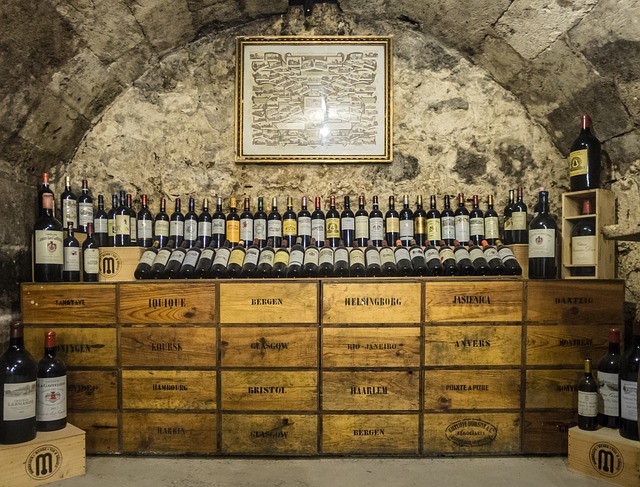If you’re a wine lover, knowing about the correct storage of fine wines will be a subject that’s close to your heart.
Fine wines are expensive, and relatively fragile too, meaning they are susceptible to poor storage conditions. However, there’s a big difference between wines bought for long-term ageing and bottles bought with the intention of enjoying them within a few years of release.
Professional grade storage is recommended if you’re investing for wines to mature. For the rest of us, a few sensible guidelines should be observed to keep your wine in good condition until you’re ready to open the bottle.
The right temperature wine
First off, wine should be stored at the correct temperature to ensure optimum flavour and balance. You don’t want your wine to age prematurely, so avoid high or low temperature as well as extreme fluctuations.
The ideal storage temperature for red wine is 12-19C, white wine 8-12C and champagne 5-8C. At above 21C, your wine is in danger of ageing more quickly than desirable. Even hotter and the wine might ‘cook’ leading to flat aromas and flavours.
It’s not an exact science, though, and as long as your wine is opened within a few years from its release, it should taste fine. Keeping wine in the fridge is fine for no longer than a couple of months in preparation for serving, but longer term cool storage below 7C is not recommended.
The lack of moisture could over time dry out the cork, with the risk of air getting into the bottle and damaging its contents.
What’s worse is storing your wine somewhere it could freeze.
Whether you place it in the freezer for quick chilling and then forget all about it, or whether your wine racks are situated in an unheated garage, the liquid will expand as it turns to ice, pushing the cork out – disaster!
Rapid, extreme or frequent temperature changes should be avoided at all cost. The combination of ‘cooked’ flavours as well as the expansion and contraction of the liquid inside the bottle as a result of temperature swings, may cause seepage and push the cork out. Aim for a consistent temperature environment if at all possible.
The importance of humidity
Like temperature, humidity is vital to the condition of the wine. Too high and the damp conditions can encourage mould growth, while bottle labels can loosen and degrade. Too low and the air will dry out the cork, eventually allowing air inside the bottle and spoiling the contents.
Professional wine consultants recommend an ideal humidity level of 70%, but anywhere between 50% and 80% should be safe. Use a thermohygrometer to measure humidity levels in the air and take action (placing a pan of water nearby to moisten the air; installing a dehumidifier to bring the moisture down) if needed.
Keep it still and in the dark
Light, and sunlight in particular, can pose a problem for longer term wine storage as the sun’s UV rays can degrade and ruin the wine.
Fluorescent light may also emit UV rays. If you’ve ever wondered why wine bottles are usually made from coloured glass, here’s your answer: they’re like sunglasses for your wine! For extra light protection, you could cover and wrap your bottles with a cloth or store them inside a cardboard box.
Vibration and movement can also spoil the wine, speeding up the chemical reactions in the liquid. There’s no need to be too precious about this – washing machine vibrations nearby are hardly likely to be a problem unless you have very old wines where the sediment could be disturbed making them gritty on the palate. That said, don’t shake or spray your wine like a Formula One winner either.
Horizontal wine storage
Traditionally, wine bottles are stored lying down. The reason behind it is that the liquid makes contact with the cork to keep it moist which, in turn, prevents cork shrinkage and air seeping into the bottle and spoiling the wine. However, unless you are storing wine bottles for the longer term, or if the bottles have screw caps or plastic corks, this is not really necessary.
Not that horizontal storage is ever a bad thing – and traditional wine racks are probably still the most space efficient way to store your bottles. When it comes to choosing the right location for home wine storage, you need to be guided by the possibilities offered by your property.
Do you have a cool basement that’s not too damp and could serve as a wine cellar? Or a dark, out-of-the-way space where wine racking could be fitted? Perhaps there’s a little used cupboard or storage area in your house that could be repurposed for storing wine?
Kitchens, laundry rooms and boiler rooms should not be considered on account of their likely temperature and humidity fluctuations; they’re probably also not dark enough. If you have identified a suitable space but it’s too warm, why not install a wine cooler or wine cabinet? These units come in all shapes, sizes and finishes and at various price points.
At the lower end of the market, there’s the simple wine fridge, while at the upper end elaborate furniture units can be tailor made for your home wine storage.
This article was written by Dakota Murphey, an independent writer working alongside luxury, bespoke interior designers Artichoke.
